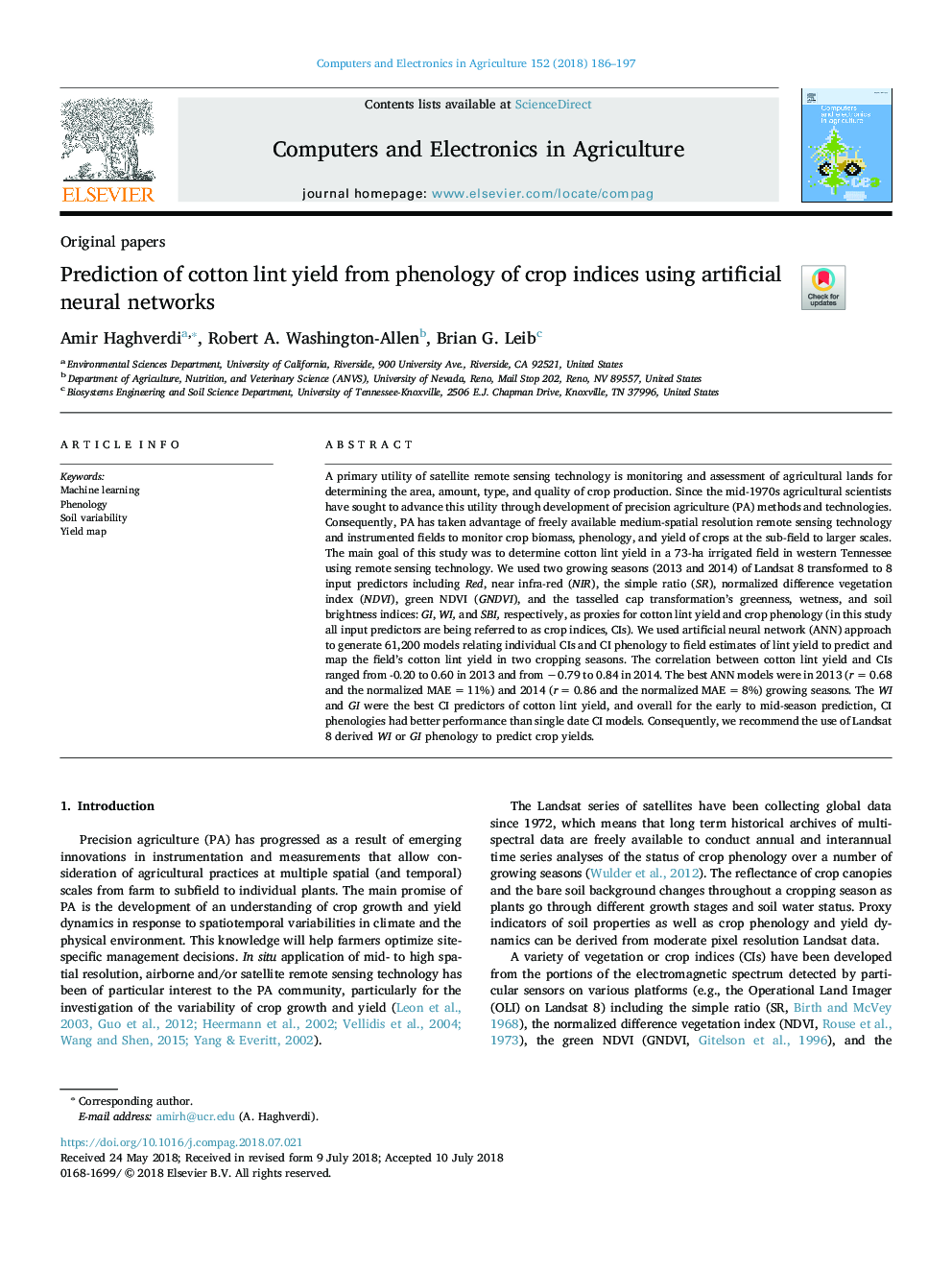| کد مقاله | کد نشریه | سال انتشار | مقاله انگلیسی | نسخه تمام متن |
|---|---|---|---|---|
| 6539249 | 1421096 | 2018 | 12 صفحه PDF | دانلود رایگان |
عنوان انگلیسی مقاله ISI
Prediction of cotton lint yield from phenology of crop indices using artificial neural networks
ترجمه فارسی عنوان
پیش بینی عملکرد پنبه از فنولوژی شاخص های محصول با استفاده از شبکه های عصبی مصنوعی
دانلود مقاله + سفارش ترجمه
دانلود مقاله ISI انگلیسی
رایگان برای ایرانیان
کلمات کلیدی
فراگیری ماشین، فنولوژی، تنوع خاک، نقشه عملکرد،
موضوعات مرتبط
مهندسی و علوم پایه
مهندسی کامپیوتر
نرم افزارهای علوم کامپیوتر
چکیده انگلیسی
A primary utility of satellite remote sensing technology is monitoring and assessment of agricultural lands for determining the area, amount, type, and quality of crop production. Since the mid-1970s agricultural scientists have sought to advance this utility through development of precision agriculture (PA) methods and technologies. Consequently, PA has taken advantage of freely available medium-spatial resolution remote sensing technology and instrumented fields to monitor crop biomass, phenology, and yield of crops at the sub-field to larger scales. The main goal of this study was to determine cotton lint yield in a 73-ha irrigated field in western Tennessee using remote sensing technology. We used two growing seasons (2013 and 2014) of Landsat 8 transformed to 8 input predictors including Red, near infra-red (NIR), the simple ratio (SR), normalized difference vegetation index (NDVI), green NDVI (GNDVI), and the tasselled cap transformation's greenness, wetness, and soil brightness indices: GI, WI, and SBI, respectively, as proxies for cotton lint yield and crop phenology (in this study all input predictors are being referred to as crop indices, CIs). We used artificial neural network (ANN) approach to generate 61,200 models relating individual CIs and CI phenology to field estimates of lint yield to predict and map the field's cotton lint yield in two cropping seasons. The correlation between cotton lint yield and CIs ranged from -0.20 to 0.60 in 2013 and from â0.79 to 0.84 in 2014. The best ANN models were in 2013 (râ¯=â¯0.68 and the normalized MAEâ¯=â¯11%) and 2014 (râ¯=â¯0.86 and the normalized MAEâ¯=â¯8%) growing seasons. The WI and GI were the best CI predictors of cotton lint yield, and overall for the early to mid-season prediction, CI phenologies had better performance than single date CI models. Consequently, we recommend the use of Landsat 8 derived WI or GI phenology to predict crop yields.
ناشر
Database: Elsevier - ScienceDirect (ساینس دایرکت)
Journal: Computers and Electronics in Agriculture - Volume 152, September 2018, Pages 186-197
Journal: Computers and Electronics in Agriculture - Volume 152, September 2018, Pages 186-197
نویسندگان
Amir Haghverdi, Robert A. Washington-Allen, Brian G. Leib,
